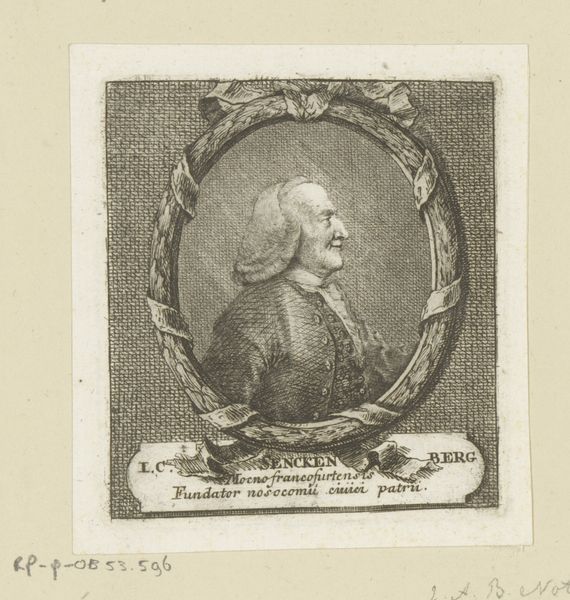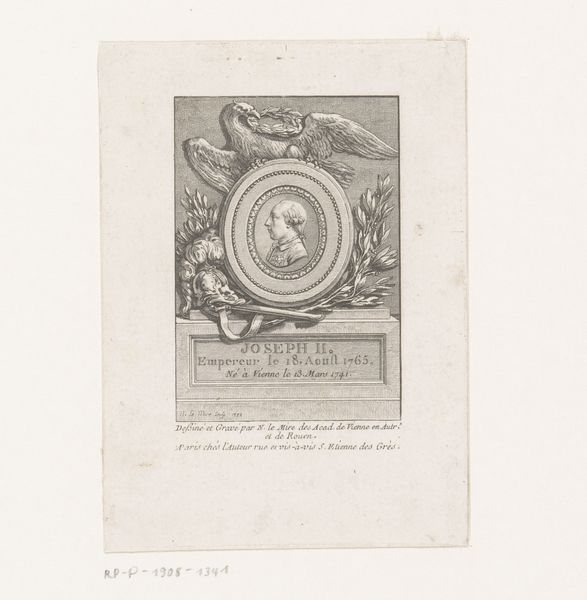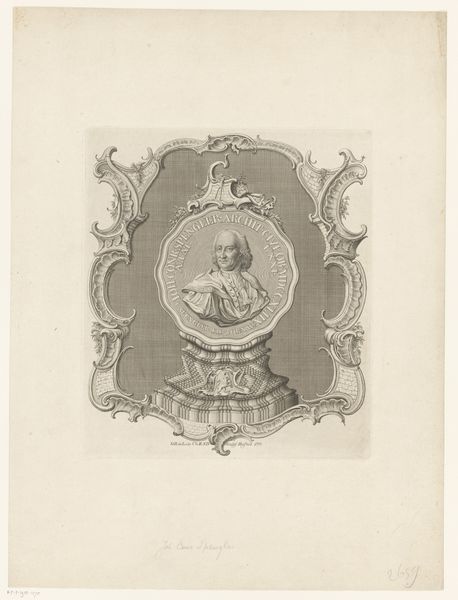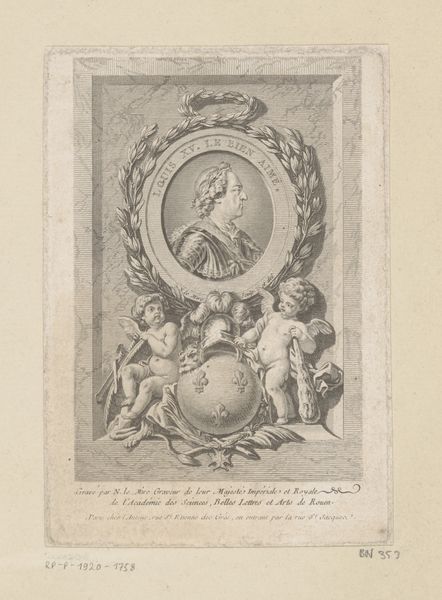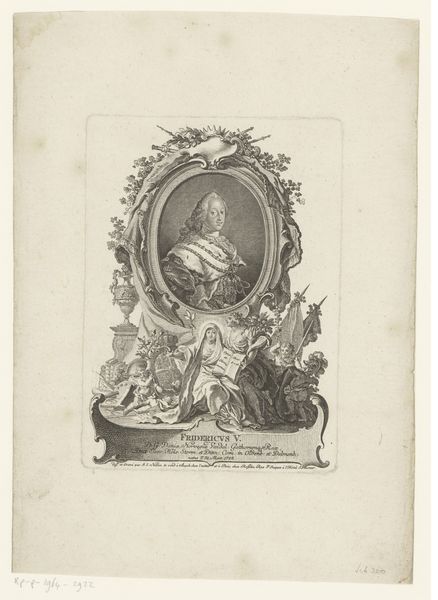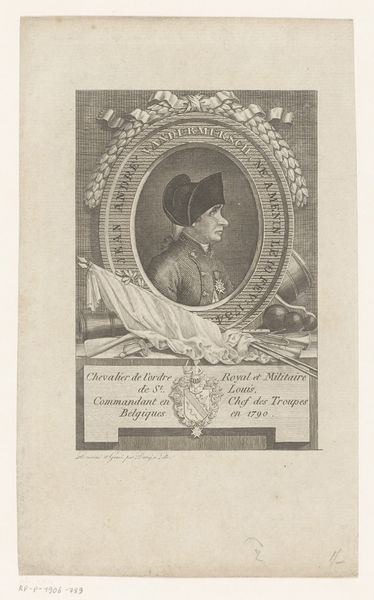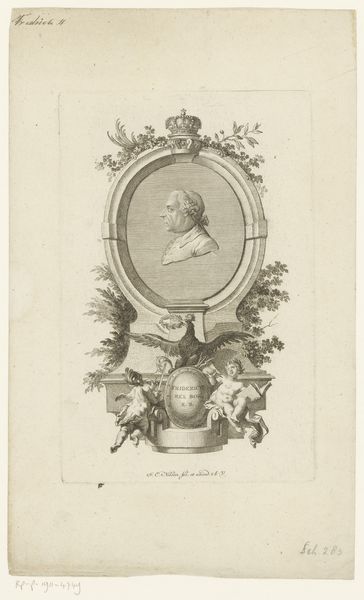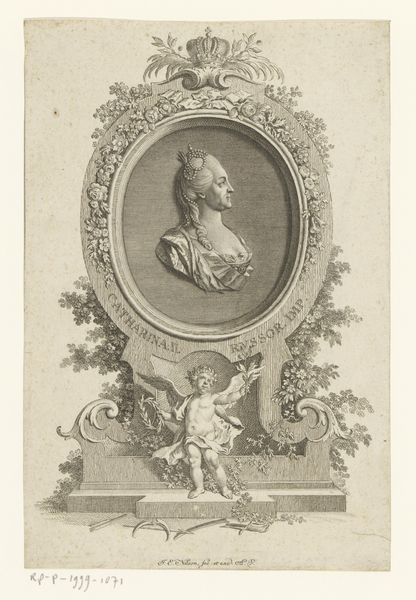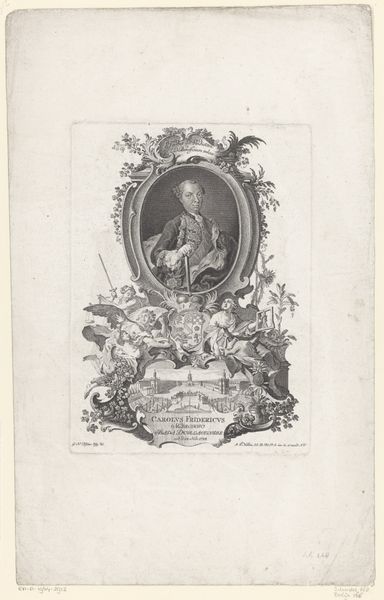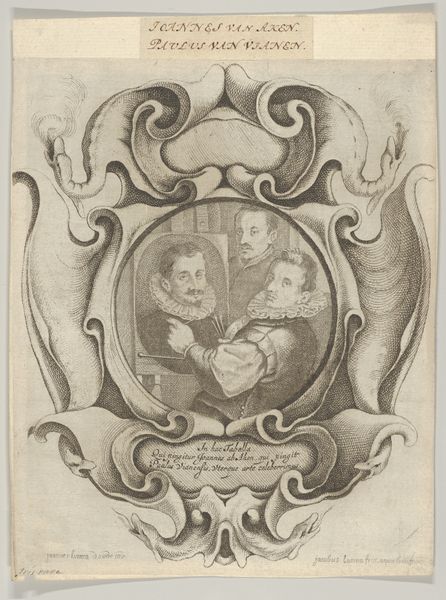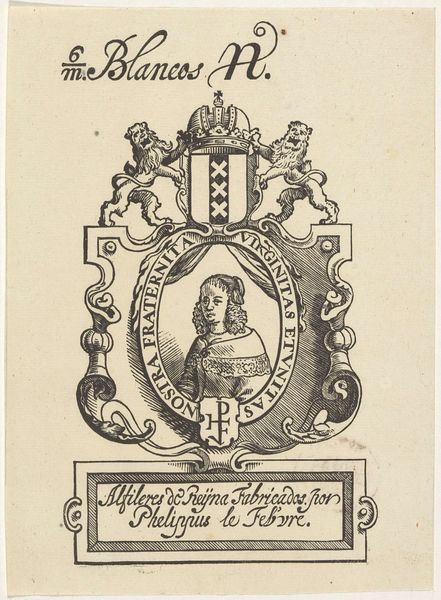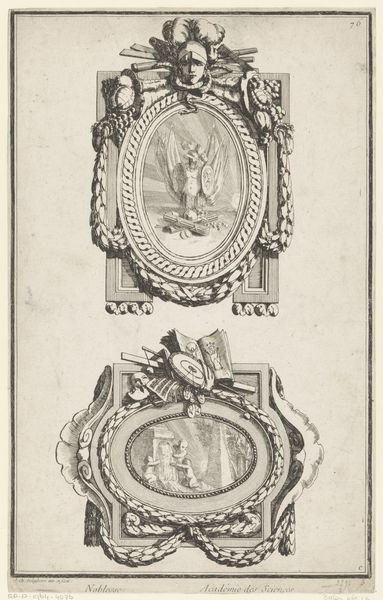
Dimensions: 165 mm (height) x 114 mm (width) (plademaal)
Curator: Terkel Kleve's rendering of "Madame B. C. Boye" dates from somewhere between 1743 and 1797. This artwork is currently held at the SMK, Statens Museum for Kunst. What strikes you initially? Editor: An ethereal calmness. It feels like looking at a dream, especially with the single colored pencil and the woman's placid gaze. Curator: Indeed. The artist primarily used a red coloured pencil, quite a statement given how limiting that might appear. The use of this colored pencil is rather intriguing, hinting at an artistic process that prioritizes precision and control, very much of the Baroque style. Editor: Absolutely, though I wonder about the context of printmaking itself. What choices are being made by having this image created as a print, about availability, consumption? Is this intended for the consumption of a more commercial market, or something else entirely? Curator: Good question. Prints allowed for a wider distribution than a unique drawing might. Examining who had access to such portraiture is revealing. Was it strictly aristocratic, or was it also reaching the emerging middle classes? Editor: And the material itself – colored pencil on what looks like laid paper – how does that influence the final effect? The texture of the paper adds to that dreamy quality I felt initially. The choice seems deliberately understated, almost resisting the opulence of the era. Curator: The relative affordability of printmaking, including use of inexpensive colored pencils, expands the conversation around portraiture to those who might not be able to afford to sit for a painting, perhaps? Editor: A democratizing gesture? I find that compelling, thinking about Madame Boye herself, her status reflected back to us through this medium. The fact that we know the precise birth date written here lends her figure to feel less ghostly. Curator: Ultimately, this seemingly simple drawing on paper unravels complex questions about the social fabric of portraiture in that period, even today. Editor: It also proves that quiet strokes can whisper loudly across time. And I am grateful for the artist’s gentle precision!
Comments
No comments
Be the first to comment and join the conversation on the ultimate creative platform.


